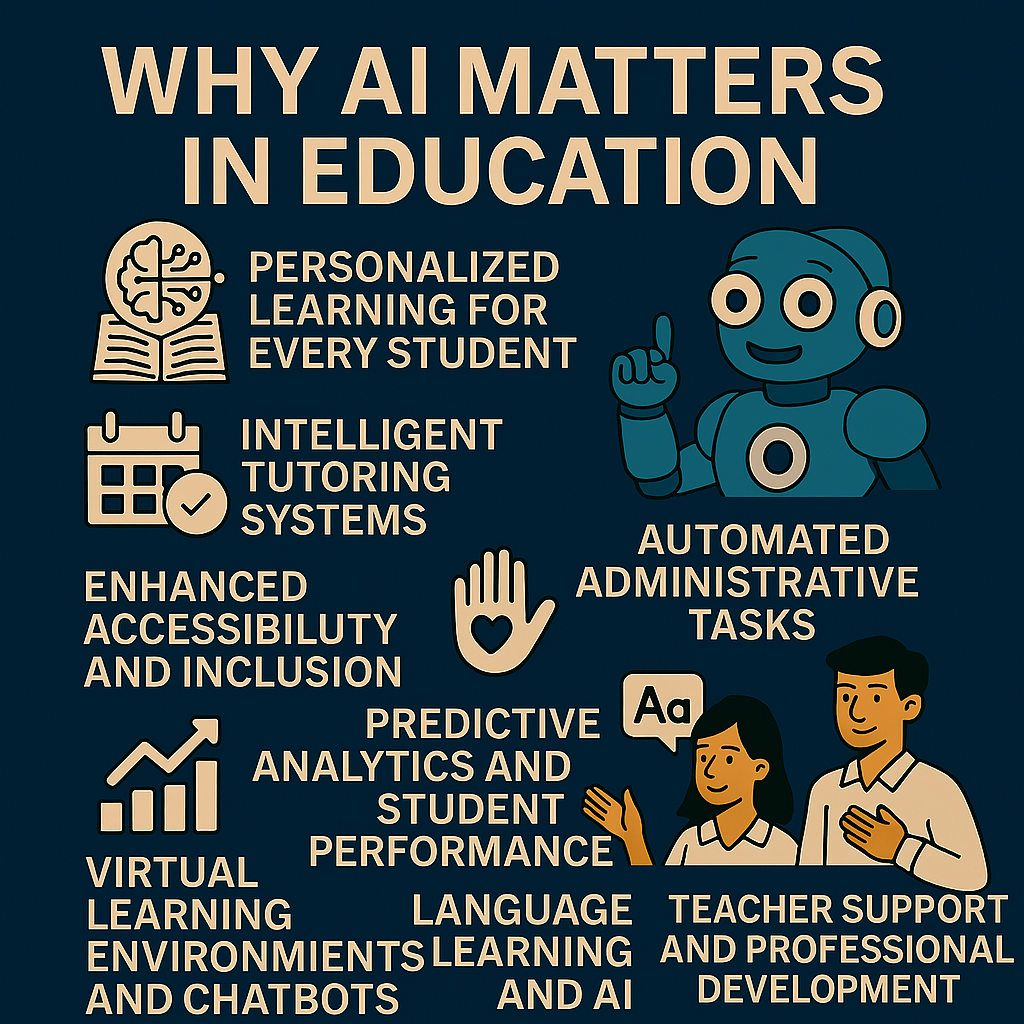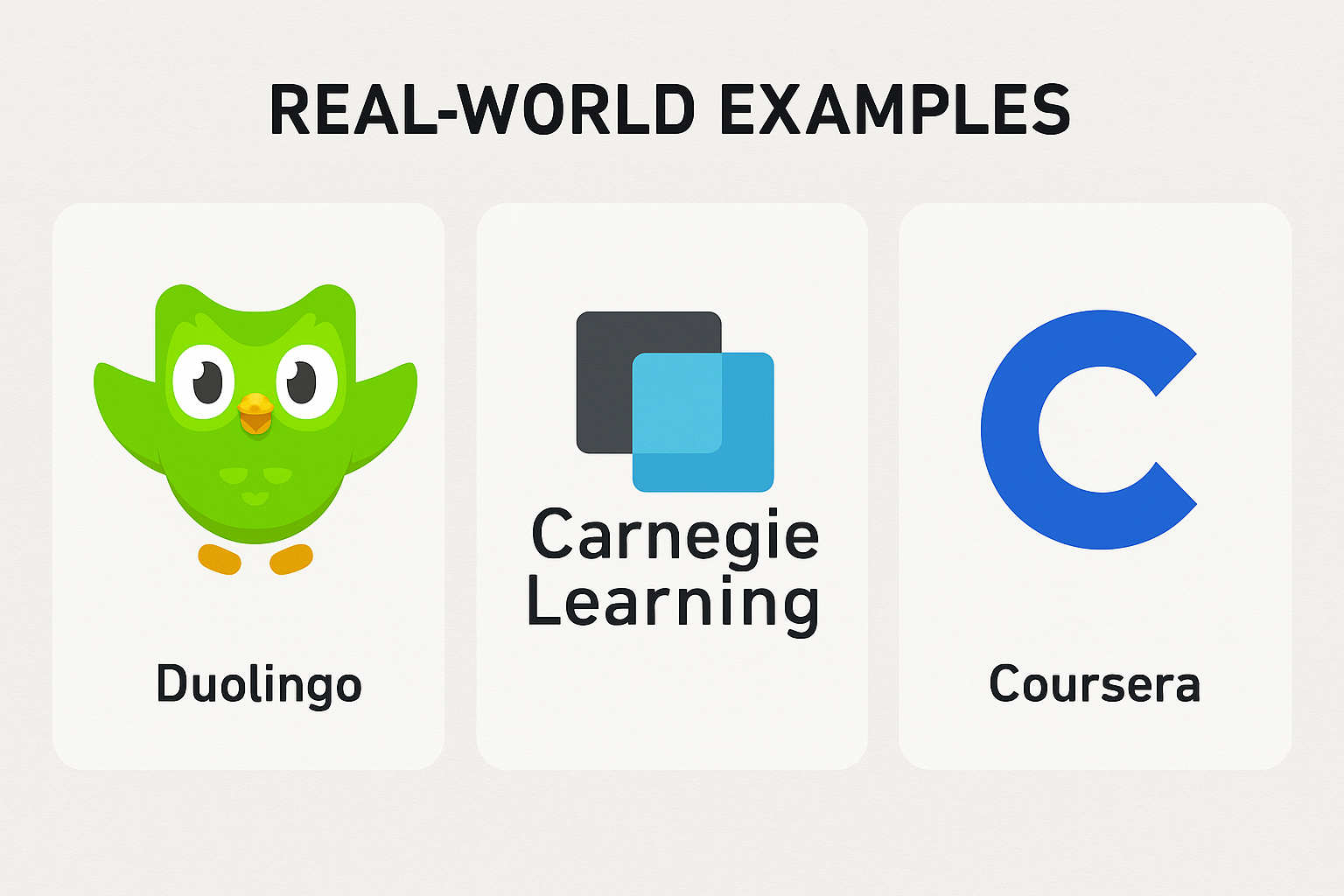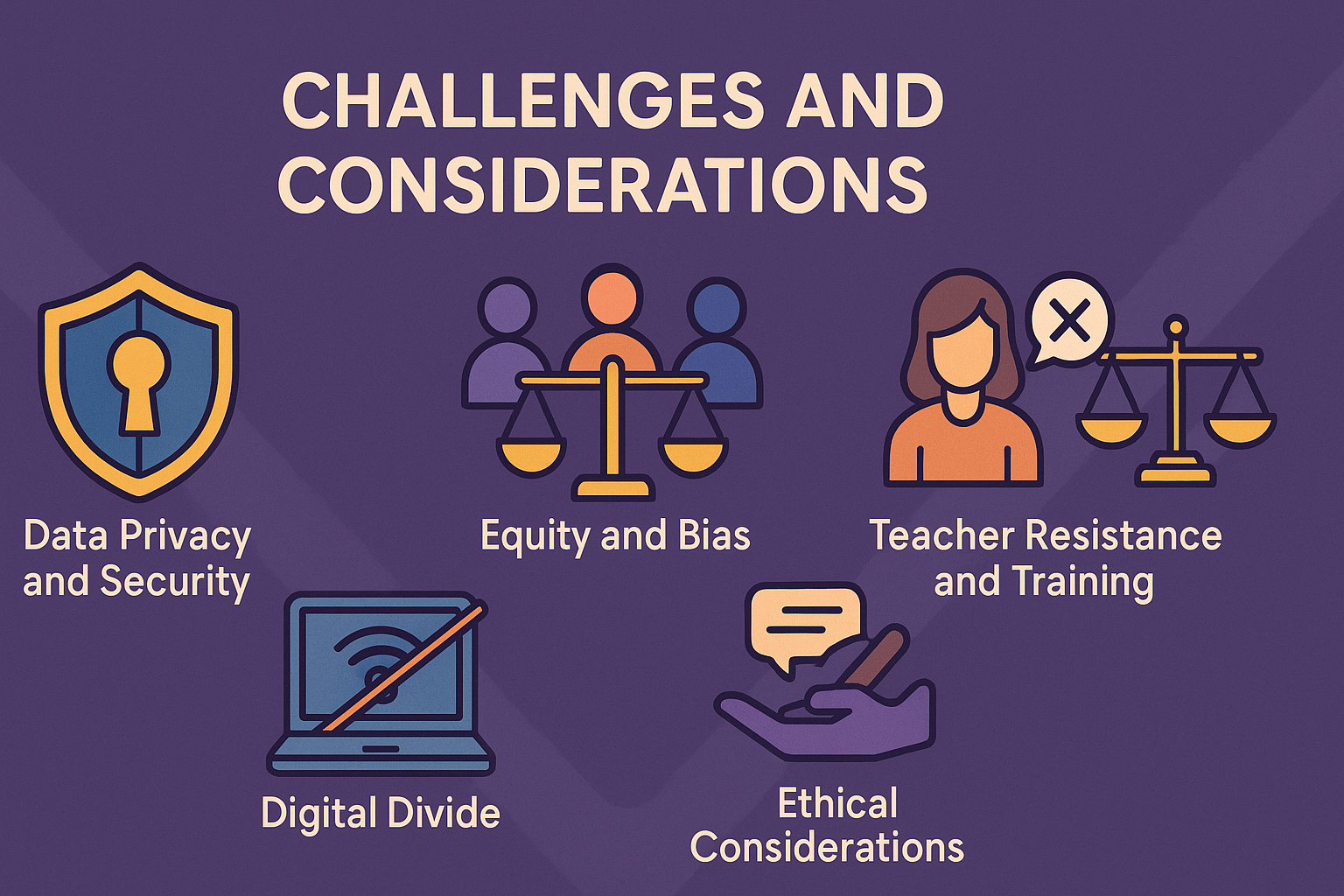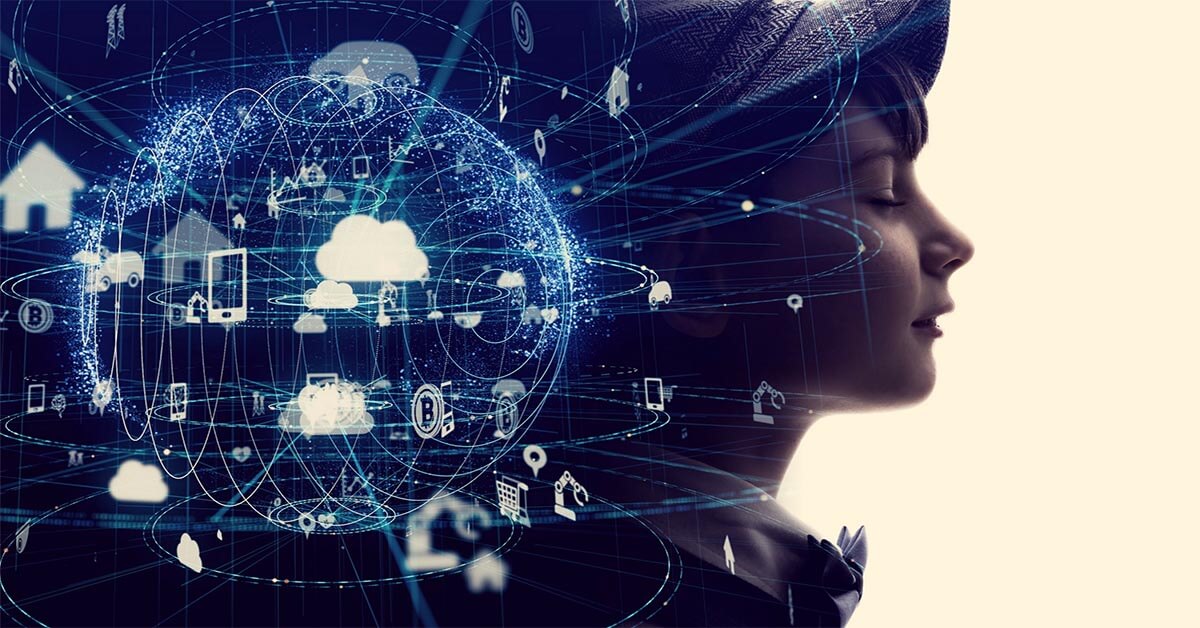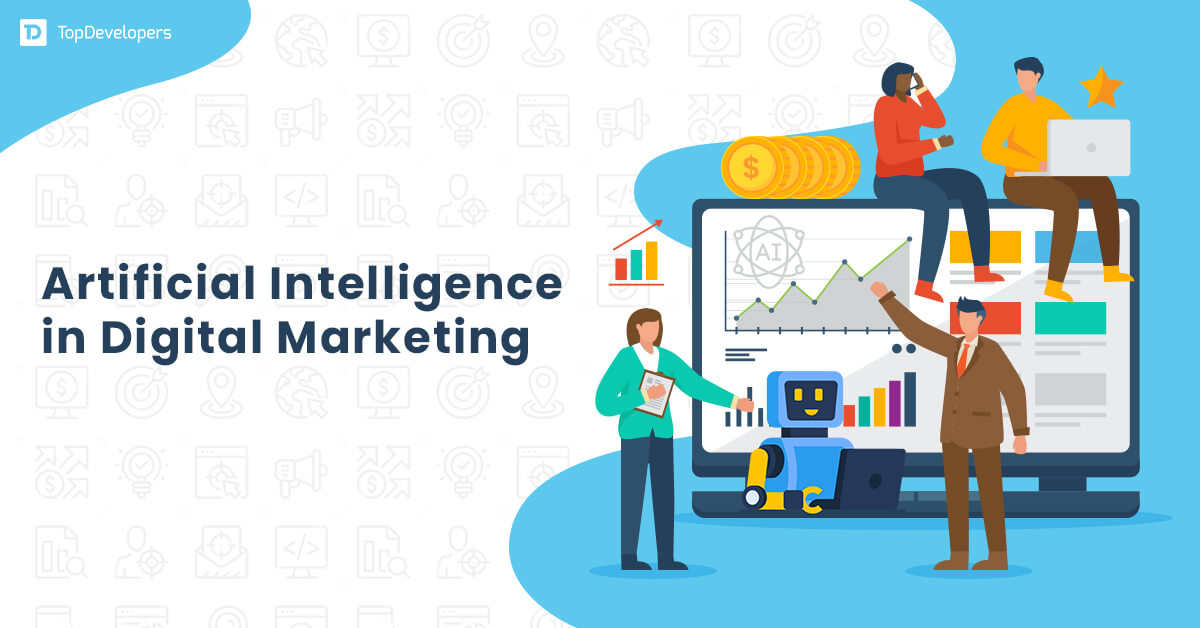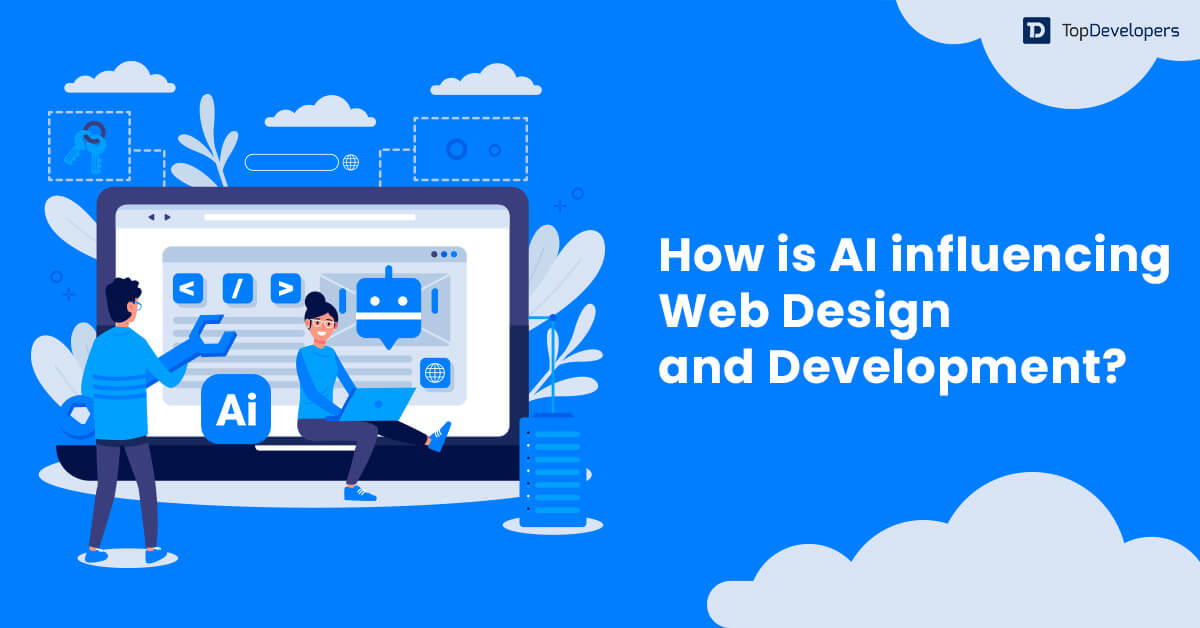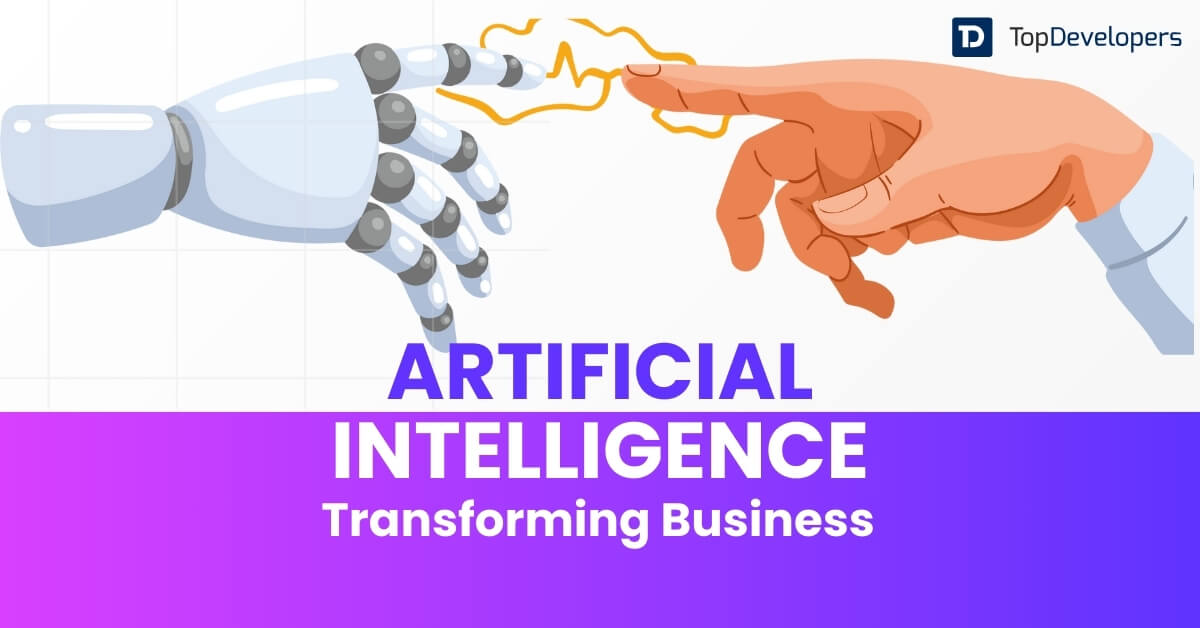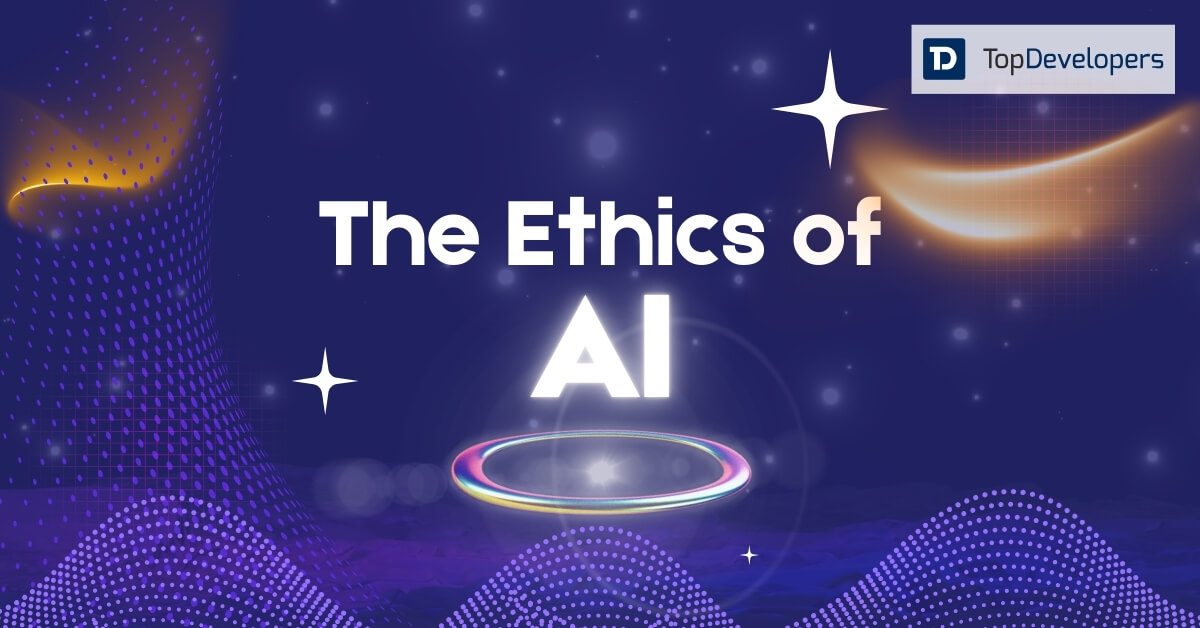
Artificial intelligence (AI) inclusion in the educational field is changing institution operations and teacher and student interactions. Although artificial intelligence was formerly thought of as futuristic, now it is a useful tool improving individualized learning, simplifying administrative tasks, and worldwide access to high-quality education. Many top education app development companies are looking at using artificial intelligence in many spheres of learning.
By changing how teachers and students interact, artificial intelligence (AI) becomes ever more significant in education. Through tailored courses and resources to meet individual student requirements, artificial intelligence improves learning outcomes through personal education, thereby increasing engagement and retention. Designed to replicate one-on-one coaching for difficult topics, intelligent tutoring systems provide real-time feedback and direction. By automating administrative chores such as attendance monitoring and grading, artificial intelligence also frees teachers to concentrate more on instruction. Through capabilities like voice recognition and translation, AI-powered technologies can help students with impairments and linguistic difficulties increase accessibility and inclusion. By use of chatbots and virtual assistants, the technology provides 24/7 support, thereby guaranteeing students obtain rapid assistance whenever. AI is helping to solve issues such as teacher shortages and varied learning demands by making education more efficient, scalable, and affordable, therefore promoting a more inclusive and effective learning environment. The important role of AI in education is discussed in this article along with its advantages, uses, and changing interaction between technology and learning.
Table of Contents
- The Role of AI in Modern Education
- AI in Education: 2025 Statistics Reveal the Future of Learning
- Why AI Matters in Education
- 1. Personalized Learning for Every Student
- 2. Intelligent Tutoring Systems
- 3. Automated Administrative Tasks
- 4. Enhanced Accessibility and Inclusion
- 5. Predictive Analytics and Student Performance
- 6. Virtual Learning Environments and Chatbots
- 7. Language Learning and AI
- 8. Teacher Support and Professional Development
- Generative AI-Driven Adaptive Learning
- Key Benefits of AI in Education
- 1. Personalized Learning Experiences
- 2. Enhanced Student Engagement
- 3. Improved Educator Efficiency
- 4. Data-Driven Insights for Better Outcomes
- 5. Increased Accessibility and Inclusivity
- Real-World Examples of AI in Education
- 1. AI Teaching Assistants
- 2. Adaptive and Personalized Learning
- 3. Intelligent Tutoring Systems
- 4. Early Intervention and Student Success Prediction
- 5. Automated Grading and Assessment
- 6. Virtual Laboratories
- 7. Assistive Technology and Accessibility
- Speech Recognition and Text-to-Speech:
- 8. AI Chatbots and Virtual Assistants
- 9. Classroom Management and Gamification
- 10. Curriculum Planning and Content Creation
- Challenges and Considerations of AI in Education
- Best Practices for Implementing AI in Education
- The Future of AI in Education
The Role of AI in Modern Education
Artificial intelligence (AI) is drastically changing the scene of education by offering fresh chances for operational efficiency, customized learning, and more general accessibility. Its integration is growing fast; at least one artificial intelligence solution has been used by more than 60% of educational institutions all over.
1. Personalized Learning
AI-powered systems change material and lesson plans to fit every student’s learning speed, style, and performance. With adaptive learning techniques proven to greatly raise test scores and retention rates, this personalizing boosts student involvement and understanding.
2. Intelligent Tutoring Systems
AI-driven instructors provide instantaneous feedback, simplify difficult subjects, and walk students through demanding content. Particularly in STEM fields, these systems may run around-the-clock and provide help outside of conventional classroom hours, hence boosting student persistence.
3. Smart Content Creation
AI automates the creation and updating of textbooks, tests, and instructional resources, therefore guaranteeing that information is current and relevant. This technology is up to 40% more efficient than conventional techniques.
4. Automated Grading and Assessment
AI simplifies grading, therefore freeing teachers of up to 70% of their labour and giving students real-time comments. This lets instructors concentrate more on student interaction and teaching.
5. Predictive Analytics
Using student data, predictive analytics—AI—allows timely interventions by identifying students who are at risk of lagging. With great precision, these technologies can forecast academic challenges, thereby guiding focused assistance plans.
AI in Education: 2025 Statistics Reveal the Future of Learning
Adoption of artificial intelligence in education has sped up drastically in 2025, changing the way institutions run, professors teach, and students learn. Important data and trends underline the scope, influence, and future orientation of AI-powered learning.
Adoption and Market Growth
- Up significantly from 66% in 2024, almost all students (92%) now utilize AI in some way; 88% have employed generative AI for tests.
- Reflecting yearly growth rates of over 40%, the worldwide AI in the education market is expected to reach between $5.57 billion and $7.57 billion in 2025; projections are $30.28 billion by 2029 and $88.2 billion by 2032.
- Daily usage of artificial intelligence by 47% of education executives and the inclusion of generative artificial intelligence into their teaching strategies by 58% of university professors.
Student and Teacher Use
- 89% of students admit to using ChatGPT for homework, and 97% of higher education students use AI-powered tools to enhance learning.
- 90% of students using ChatGPT for studying find it more beneficial than a tutor.
- 50% of teachers use AI for lesson planning, and 54% of students show increased engagement when AI tools are part of the learning experience.
- Through tailored learning, AI technology may raise retention rates by up to 30%; meanwhile, colleges using AI tools
Why AI Matters in Education
Particularly in big classes in underfunded areas, traditional educational approaches often find it difficult to meet the many demands of their pupils. AI helps overcome these challenges by
- Personalizing learning experiences
- Automating routine tasks
- Supporting data-driven decisions
- Bridging educational gaps through accessibility
With AI, education becomes more inclusive, adaptive, and efficient.
1. Personalized Learning for Every Student
Personalized learning—that is, customizing material, speed, and feedback to meet individual student needs—is among the most powerful applications of artificial intelligence in education.
How it works
- AI systems evaluate performance data and learning patterns;
- They also instantly modify courses to align with a student’s strengths and weaknesses.
- Students get suggestions and specifically tailored materials.
- For example, websites like Khan Academy or Duolingo use AI to personalize practice sessions, enabling students to remain challenged but not overburdened.
2. Intelligent Tutoring Systems
Designed to replicate the function of a human teacher, AI-powered tutoring systems provide on-demand academic guidance. Additionally valued in 2025 at around 1.25 billion US dollars. Because of their remarkable inputs derived from artificial intelligence and machine learning, chatbots are responding humanely. Most education facilities nowadays are moving toward automated replies to students using AI-enabled chatbots, for which top chatbot developers create chatbots based on the topic or subject inquiries to react more precisely and properly.
Benefits
- 24/7 availability
- Instant feedback and correction
- Interactive learning with quizzes, simulations, and games
- These systems reinforce classroom learning and provide supplementary support, especially in subjects like math and science.
3. Automated Administrative Tasks
Teachers devote a lot of time to non-teaching chores like attendance, grading, and scheduling. Many of these administrative chores can be automated using artificial intelligence.
Examples of automation
- AI systems can grade multiple-choice examinations, written assignments, even essays
- Scheduling is optimized by smart algorithms using room assignments and class timings.
- AI systems can track academic development and notify staff members of pupils in danger.
- It follows that teachers have more time to give education and student involvement top priority.
4. Enhanced Accessibility and Inclusion
AI helps ensure that students with disabilities or learning differences can participate in education.
Applications
- Provision of tools that can change speech to text and text to speech for those with visual or hearing difficulties
- Using AI to provide language translation in classrooms where students speak different languages
- Interfaces that can be changed depending on the user
- Because of these technologies, each student can learn according to their abilities.
5. Predictive Analytics and Student Performance
AI allows schools to predict student results, adjust courses accordingly, and act early whenever needed.
Use cases
- Noticing and helping students who appear to be at risk of not staying in school
- Providing learning routes based on recent trends
- Reworking the curriculum to align with how students respond and do in school
- Using data makes it possible for teachers to make well-informed choices and provide helpful support to students.
6. Virtual Learning Environments and Chatbots
Since remote learning is on the rise, AI is essential for developing virtual classrooms that are captivating and interactive.
Tools used
- AI chatbots available to answer students as soon as they ask a question.
- Some applications have virtual assistants that help students stay on track with their work.
- Interactive learning enhances the interest of the subject matter.
- They make it possible to copy and also make better several classroom features online.
7. Language Learning and AI
With AI, people can now use apps and other platforms to learn new languages in a way that fits their style and interests.
Key Features
- Instant help with saying words correctly
- Lessons that are tailored to how fluent the student is.
- AI assistants that support a variety of languages
- For instance, Google Translate and Babbel rely on AI to help with both the meaning and the accuracy of each translation.
8. Teacher Support and Professional Development
AI doesn’t want to take the place of a teacher; it only wants to help them.
Advantages
- Understanding how each class and student performs
- Resources to support creating effective lessons and finding areas that students are lacking in
- Guidance for training and enhancing course content
- AI improves both work happiness and educational quality by arming educators with smart tools.
Generative AI-Driven Adaptive Learning
Through highly customized, dynamic, and successful learning experiences, generative artificial intelligence-driven adaptive learning is transforming corporate training and education. This method uses cutting-edge artificial intelligence models to create and alter material in real time, therefore guaranteeing that every student gets teaching catered to their particular requirements, abilities, and development.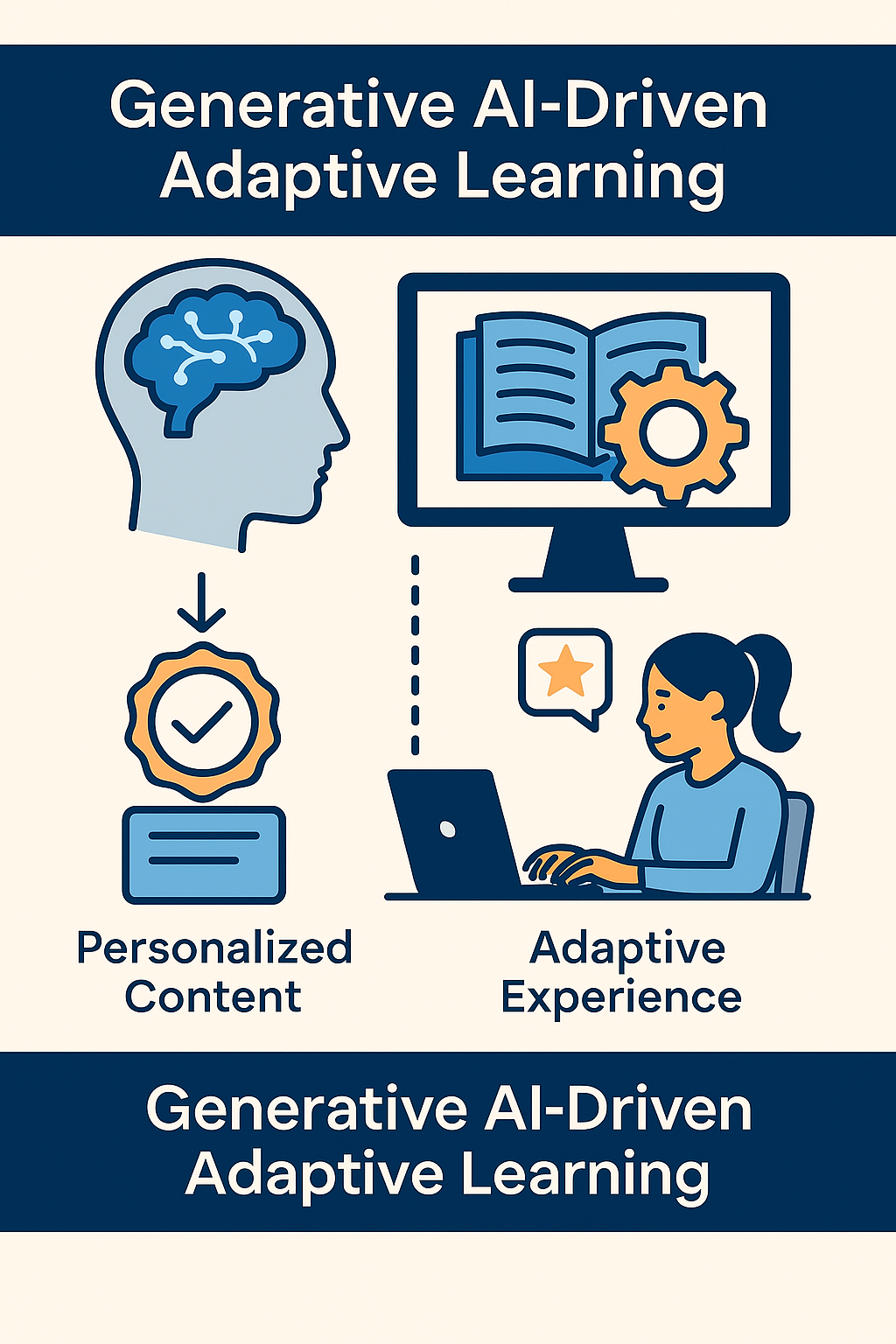
How Generative AI Powers Adaptive Learning Personalised Content Creation
Generative artificial intelligence independently generates learning resources, tests, interactive modules, and feedback depending on each student’s performance, knowledge gaps, and learning speed. Unlike fixed materials, this information changes right away to fit personal development.
Dynamic Learning Paths
AI points out areas of strength and weakness, then tailors timetables, difficulty levels, and course of instruction so students progress effectively without needless repetition.
Real-Time Feedback and Adjustment
Adaptive systems allow students to correct errors and enhance their knowledge immediately with customized feedback.
Engagement and Motivation
Generative artificial intelligence uses interactive components, such as gamification, simulations, and multimedia, to keep students involved and motivated.
Scalability and Automation
AI automates administrative processes, material development, and evaluation, therefore enabling teachers to concentrate on high-value interactions and helping more students at scale.
Key Benefits of AI in Education
1. Personalized Learning Experiences
AI tailors education to individual student needs, improving engagement and academic success.
-
How It Works: AI-driven platforms, such as adaptive learning systems, analyze student performance data to customize lessons. For example, tools like Smart Tutors adjust math exercises based on a student’s strengths and weaknesses.
-
Impact: Personalized learning boosts comprehension and retention. Studies show adaptive learning can improve test scores by up to 15% compared to traditional methods.
-
Example: A middle school student struggling with algebra uses an AI platform that provides targeted practice, leading to a 20% improvement in quiz scores.
-
Why It Matters: By addressing individual learning paces and styles, AI ensures no student is left behind, enhancing overall academic outcomes.
2. Enhanced Student Engagement
AI makes learning interactive and engaging through gamification, virtual assistants, and immersive tools.
-
How It Works: AI-powered apps use gamified elements like rewards or progress tracking to motivate students. Virtual tutors, such as AI chatbots, answer questions in real-time, keeping students engaged.
-
Impact: Increased engagement correlates with higher completion rates. For instance, a 2023 study found that students using AI gamified platforms had a 25% higher module completion rate.
-
Example: A high school uses an AI-driven language app with interactive quizzes, resulting in 30% more students completing assignments on time.
-
Why It Matters: Engaged students are more likely to stay motivated, reducing dropout rates and fostering a love for learning.
3. Improved Educator Efficiency
AI automates repetitive tasks, allowing educators to focus on teaching and mentoring.
-
How It Works: AI tools handle grading, lesson planning, and administrative tasks. For example, AI-based grading systems can assess essays in seconds, providing consistent feedback.
-
Impact: Teachers save significant time, with some studies estimating a 30% reduction in grading workload. This allows more time for student interaction and curriculum development.
-
Example: A university professor uses an AI grading tool, cutting essay evaluation time from 10 hours to 2 hours weekly, enabling more personalized student feedback.
-
Why It Matters: Freeing educators from mundane tasks enhances teaching quality and supports student-centered instruction.
4. Data-Driven Insights for Better Outcomes
AI provides actionable insights through analytics, helping educators and institutions make informed decisions.
-
How It Works: AI systems analyze data on student performance, attendance, and behavior to identify trends and risks. Predictive analytics can flag students at risk of dropping out.
-
Impact: Data-driven interventions improve student success rates. For example, AI analytics have reduced dropout rates by up to 15% in some universities.
-
Example: A school district uses AI to predict at-risk students, implementing targeted support that increases graduation rates by 10%.
-
Why It Matters: Insights enable proactive interventions, optimizing resources and improving academic performance.
5. Increased Accessibility and Inclusivity
AI promotes equitable education by making learning accessible to diverse populations.
-
How It Works: AI tools support students with disabilities through features like text-to-speech or real-time translations. They also enable remote learning for underserved communities.
-
Impact: AI bridges the digital divide, with tools like AI captions improving accessibility for hearing-impaired students by 90%, according to accessibility studies.
-
Example: A rural school uses AI-powered language apps with multilingual support, enabling non-native English speakers to excel in core subjects.
-
Why It Matters: Inclusive AI tools ensure all students, regardless of background or ability, have access to quality education.
Real-World Examples of AI in Education
From K–12 classrooms to colleges, artificial intelligence is clearly transforming educational settings all around. These are some of the most notable case studies and real-world instances:
1. AI Teaching Assistants
Jill Watson at Georgia Tech:
In its online computer science classes, Georgia Institute of Technology hired “Jill Watson,” an artificial intelligence-powered teaching assistant. Built on IBM’s Watson platform, Jill Watson automatically responded to frequently requested questions by students in online forums, therefore drastically lowering response times and relieving human TAs of much effort. This case study showed how easily artificial intelligence may fit into positions supporting staff members and let them concentrate on more complicated student requirements.
2. Adaptive and Personalized Learning
Maths Pathway at New Town High School:
Using machine learning, an AI-driven platform customizes math instruction to fit every student’s speed and approach. It evaluates student development constantly, changing material and offering instantaneous comments. Higher exam results and better engagement followed from instructors being able to more successfully fill in individual learning gaps.
Knewton:
Knewton’s adaptive learning system addresses individual learning gaps and lets students advance at their own speed, thereby customizing their education. It has sent hundreds of institutions billions of tailored suggestions.
DreamBox Learning:
An artificial intelligence-powered system helps students learn ideas at their own speed by adjusting math courses in real time depending on student reactions.
3. Intelligent Tutoring Systems
Carnegie Learning’s MATHia:
Adapting to unique learning pathways and providing real-time feedback and skill-level modifications, MATHia offers middle and high school students math tutoring driven by artificial intelligence.
Smart Sparrow at the University of Sydney:
This system allows teachers to design customized learning paths, real-time course correction based on student achievement. It brought better academic achievement and more participation.
4. Early Intervention and Student Success Prediction
Ivy Tech Community College:
Ivy Tech found pupils at danger of failing within the first two weeks of the semester using artificial intelligence. Targeted interventions made possible by the technology greatly lowered failure rates—98% of the discovered students raised their grades to at least a C.
5. Automated Grading and Assessment
Coursera:
Coursera improves course completion rates by automating grading of assignments and peer evaluations using artificial intelligence, therefore providing feedback much quicker than human graders.
General AI Grading Tools:
Grade assignments, tests, and essays using artificial intelligence helps save teachers time and guarantees consistency.
6. Virtual Laboratories
AI-Enhanced Virtual Labs:
Particularly in informatics and STEM education, artificial intelligence-powered virtual labs provide immersive, interactive, and experiential learning settings. These laboratories provide real-time feedback, customizing material and tests using artificial intelligence, and encourage critical thinking abilities.
7. Assistive Technology and Accessibility
Speech Recognition and Text-to-Speech:
For pupils with difficulties like dyslexia or hearing loss, AI systems translate spoken words into text and vice versa.
AI-Driven Language Learning Apps:
These applications make language learning more effective and accessible by using adaptive strategies to change lesson difficulty and provide quick feedback.
8. AI Chatbots and Virtual Assistants
Mainstay:
By answering queries, reminding them of deadlines, guiding them through administrative procedures, and offering instant help outside of school hours, AI chatbots like Mainstay provide students.
9. Classroom Management and Gamification
AI-Enhanced Classroom Platforms:
These systems gamify classroom management, monitor student involvement, and reward good conduct, therefore enabling instructors to more successfully control and inspire their pupils.
10. Curriculum Planning and Content Creation
Magic School AI, Eduaide.AI:
These technologies simplify teaching and guarantee consistency with learning goals by helping teachers design courses, construct digital lessons and tests, and create individualized education plans (IEPs).
Challenges and Considerations of AI in Education
Though promising, artificial intelligence in education has various issues that need to be resolved if we are to guarantee moral and efficient use.
1. Data Privacy and Security
AI systems depend on enormous volumes of student data, which begs privacy issues. It is crucial for schools to follow regulations such as GDPR or FERPA (Family Educational Rights and Privacy Act). Schools have to make sure data is anonymized and kept safe against leaks.
2. Equity and Bias
If taught on biased data, artificial intelligence systems might unintentionally reinforce such prejudices. An artificial intelligence teaching system, for instance, could benefit certain groups unless its design is with fairness in mind. To mitigate this risk, conducting regular audits and utilizing varied datasets is essential.
3. Digital Divide
Not every student has the tools or high-speed internet needed for AI-driven teaching. Particularly in underdeveloped areas, this digital gap might worsen inequality.
4. Teacher Resistance and Training
Some teachers might object to artificial intelligence adoption because of a lack of technical knowledge or concern about job displacement. It is essential for thorough education and open communication about the function of artificial intelligence as a tool for assistance rather than replacement.
5. Ethical Considerations
AI has to be open and answerable. Students and parents should know, for example, how artificial intelligence generates suggestions or grading judgments. Like those created by top firms, understandable artificial intelligence models foster confidence.
Best Practices for Implementing AI in Education
The realm of education is on the brink of a revolution, heralded by the capabilities of Artificial Intelligence (AI). This powerful force promises to personalize learning experiences, streamline administrative tasks, and broaden access to high-quality educational resources. Nevertheless, to unlock these advantages, educational institutions must approach AI integration thoughtfully and with responsibility. Below are recommended practices that schools, universities, and educational technology providers should adopt to ensure a fruitful incorporation of AI into their systems.
1. Prioritize Data Privacy
In the educational landscape, AI applications routinely gather and scrutinize sensitive data, encompassing students’ personal information, academic histories, and behavioral insights. Safeguarding this data is critical to building trust while adhering to legal frameworks.
How to achieve this:
- Employ end-to-end encryption for all students’ data.
- Abide by the pertinent regulations, including FERPA, COPPA, or GDPR.
- Utilize anonymization techniques to uphold privacy during large-scale data analysis.
- Conduct frequent security assessments and penetration testing.
Why it is vital: A lapse in the security of student data can result in tremendous reputational harm and legal ramifications.
2. Train Educators
We should view AI as an enhancement, not a replacement, for the role of educators. Teachers need to be equipped to comprehend, trust, and effectively leverage AI technologies within their classrooms.
How to achieve this:
- Offer professional development that concentrates on AI tools, their applications, and ethical considerations.
- Facilitate hands-on experiences with systems like intelligent tutoring platforms, grading automation tools, and analytics dashboards.
- Cultivate an evolving mindset regarding AI’s function, highlighting its supportive role rather than an alternative to traditional teaching.
Why it’s essential: The importance of this is that educators who feel confident in using AI are more likely to integrate it meaningfully, which ultimately enhances student success.
3. Ensure Equity
AI should serve to close gaps in education rather than exacerbate them. Disparities in access to digital resources can leave disadvantaged students at a significant loss.
How to address this:
- Invest in essential internet infrastructure, devices, and educational platforms for underserved populations, particularly in rural or low-income areas.
- Ensure that AI solutions are inclusive regarding language and accessibility, such as by providing support for local languages and text-to-speech functionalities.
- Employ AI analytics to pinpoint and assist at-risk students who might otherwise be overlooked.
Why it is pivotal: Equitable access allows all students, regardless of their backgrounds, to reap the benefits of AI-driven educational enhancements.
4. Monitor and Evaluate AI’s Impact
Simply implementing AI is insufficient; it is imperative to assess its effectiveness utilizing pertinent Key Performance Indicators (KPIs).
What to evaluate:
- Student Engagement: Are learners more involved with the content due to tailored AI suggestions?
- Completion Rates: Has the introduction of AI-enhanced tutoring or interventions led to improved academic performance?
- Operational Efficiency: Has automation contributed to time savings in administration or a decrease in manual errors?
- Cost Savings: Are AI efforts yielding a worthwhile return on investment?
Why it’s essential: The importance of this is that consistent evaluation ensures AI initiatives remain aligned with educational objectives and can scale as needs change.
5. Collaborate with Experts
Numerous educational institutions may not possess the in-house expertise needed to craft and sustain AI systems. Partnering with established AI development companies can facilitate faster and more effective solution implementations.
Recommended Collaborators:
- LeewayHertz: Renowned for creating custom AI and machine learning solutions specifically designed for education and enterprise.
- 10Clouds: Specializes in AI development services, encompassing natural language processing and computer vision—ideal for smart grading or content moderation.
- PixelCrayons: Offers economical AI integration for learning management systems and educational applications.
These partnerships can assist with:
- Crafting scalable AI infrastructures
- Integrating AI into current educational platforms
- Ensuring compliance, performance, and user accessibility
Why it’s essential: Collaborating with experts accelerates innovation while diminishing the risks associated with implementation.
The Future of AI in Education
The future of Artificial Intelligence in education is promising, with emerging trends poised to further transform the sector:
Virtual and Augmented Reality
AI-powered virtual and augmented reality will provide immersive learning settings like historical reenactments or virtual scientific laboratories.
Emotion Recognition
AI might examine student emotions using face recognition or speech analysis to modify instruction strategies, hence improving involvement.
Global Collaboration
By means of real-time translation and collaboration technologies, artificial intelligence will enable cross-border learning, thereby linking teachers and students all around.
AI-Driven Curriculum Design
AI will enable dynamic courses tailored to industry demands and student interests, therefore arming them for future employment.
Conclusion
Personalizing learning, automating chores, and offering data-driven insights are helping artificial intelligence redefine education. From predictive analytics to intelligent tutoring, its uses improve student results and institutional effectiveness. However, we must address issues like data privacy, prejudice, and fair access to ensure that AI’s advantages reach every student. Teachers may use artificial intelligence (AI) to build inclusive, interesting, and future-ready learning environments by implementing best practices and utilizing solutions from businesses such as xAI, Google, and Microsoft. The more artificial intelligence develops, its influence on education will only become more important, opening the path for a more creative and easily available worldwide educational system.
FAQs
1. How is artificial intelligence used in education today?
AI is used in education for personalized learning, intelligent tutoring systems, automated grading, administrative task automation, language translation, and student performance analysis to enhance learning outcomes.
2. What are the key benefits of AI in education?
AI offers benefits like adaptive learning experiences, 24/7 student support through AI chatbots, reduced workload for teachers, real-time performance tracking, and more inclusive learning through accessibility tools.
3. Can AI personalize learning for students?
Yes, AI algorithms analyze individual student behavior, learning pace, and performance to deliver customized content, exercises, and feedback — helping students learn more effectively at their own pace.
4. What are examples of AI tools used in education?
Popular AI tools in education include:
- Duolingo (adaptive language learning)
- Khan Academy with AI integrations
- ChatGPT (for tutoring, writing help)
- Gradescope (automated grading)
- Socratic by Google (AI-powered homework help)
5. What challenges come with using AI in education?
Challenges include data privacy concerns, algorithmic bias, lack of teacher training, high implementation costs, and ensuring that AI complements — rather than replaces — human educators.
 Avantika Shergil
| May 27, 2025
Avantika Shergil
| May 27, 2025
Avantika Shergil is a technology enthusiast and thought leader with deep expertise in software development and web technologies. With over 8 years of experience analyzing and evaluating cutting-edge digital solutions, Avantika has a knack for demystifying complex tech trends. Her insights into modern programming frameworks, system architecture, and web innovation have empowered businesses to make informed decisions in the ever-evolving tech landscape. Avantika is passionate about bridging the gap between technology and business strategy, helping businesses build customized software and website, and understand about different tools to leverage effectively for their ventures. Explore her work for a unique perspective on the future of digital innovation.
